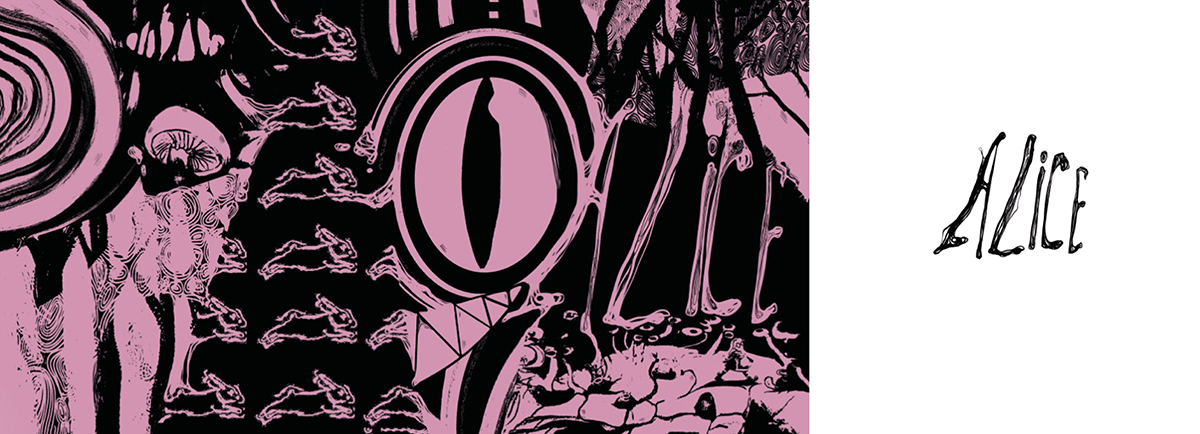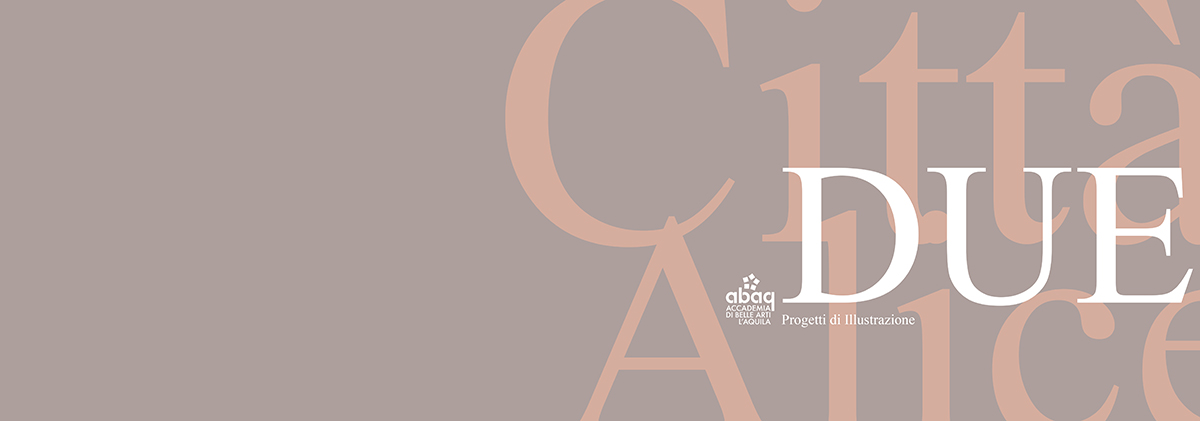Two: Alice


Scopri di più su questa tecnica Find out more about this technique
Alice in Wonderland is an 1865 novel written by Charles Lutwidge Dodgson, better known by his stage name Lewis Carroll. It tells the vicissitudes of a girl named Alice, who falls through a rabbit hole in a fantastic world of paradoxes and populated by strange creatures. A dream world, which the author creates through the use of double senses, mathematical calculations and allegories, which have put to the test the many translators of this modern fairy tale. The character and his fantastic journey are told by the four students of the Biennium of Illustration through the invention of two plates for each, showing stylistic and aesthetic choices completely personal. Recurring elements and topical characters of the story: White rabbit, the Cat of Cheshire, the Mad Hatter, the Caterpillar, which reveals to Alice that the fungus on which he is sitting has the power to shrink or grow dramatically who eats it. In both cases, these are stories in which fantasy and mathematics dominate, showing how creativity is intrinsic to human thought. With creativity these budding illustrators will always have to confront and try their hand.
Prof.ssa Maria D’ALESIO
Director of the Academy of Fine Arts of L’Aquila
ALICE
The project “Alice” was born and developed in a significant group work, which involved the boys of the first
year of the Biennium.
From the choice of the theme to the realization of the final tables, what characterized this project was the
sharing and collaboration; everyone interacted with others with the aim of keeping the thread of the narrative tense… The
four sequences that tell of Alice’s growth during her trip to Wonderland (childhood,
adolescence, maturity, old age) have been elaborated and interpreted according to the personal experience of the boys, and realized
taking into account the intervention that came before and what would come after; an important challenge, taking into account
of the basic diversity of styles and expression.
All the boys have launched themselves far beyond the simple representation of the text; they have gone into the depth of the lexicon, they have
captured and fixed on paper the suggestion of the literary passages and the adventures of the protagonists; they have consciously
faced a disorienting creative drift to then lead everything to the realization of an image that was evocative,
personal, surprising and professional.
Valeria Gasparrini
The project “Alice” was born as an artist’s book: a single leporello of about 4 and a half meters composed of four sequences: one for each student. We then worked on the succession of different styles, conceiving illustrations that introduced the next sequence and were in turn prepared by the illustrations of the previous sequence. Evolution of the project was the creation of four different leporelli that developed not only in succession, but also overlapped on the plane of space, and the entrances and exits of the sequences were physically overlapping creating a three-dimensional work. An important part of the work has been working directly on photocopies to set variants and new ideas, physically moving the protagonists on the funds prepared and intervening with cuts and collages.
The project has been included in the publication “TWO”.







